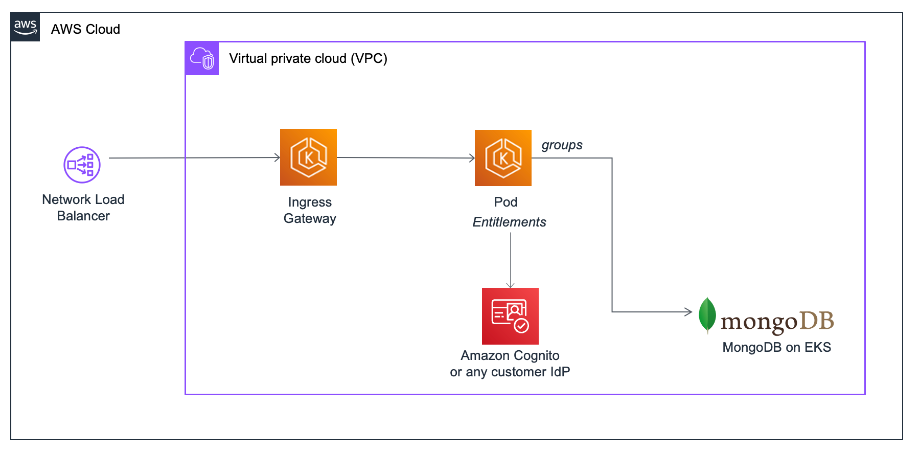Schema
Technical Details
A schema is a data model definition. EDI Data Platform’s Data Model is defined in rich JSON objects. Each schema has ID and version: <authority:source:entity-type:major-version.minor-version.patch-version. For example, osdu:wks:master-data–Well:1.0.0. Schema scopes can be INTERNAL or SHARED. The Schema service architecture is presented below.

Lab
This lab explores schemas and records in OSDU system. You will search for schemas with a query and take a look at one of them. Then you will add a new record for this schema using storage service, based on an existing one, and later check if it has been added correctly.
| Objective | Understand Schemas and Records |
|---|---|
| APIs | /api/search/v2/query/ |
| . | /api/schema-service/v1/schema/ |
| . | /api/storage/v2/records/ |
| Schema | WellActivityProgramType |
| Security | Cognito using UserID & Password |
Create a new Python file
Open the Storage and Schema.py in your text editor
Import required libraries
Import the following required libraries into your Python code:
import boto3
import hmac
import requests
import json
import getpass
import json
import base64
import hashlib
Authenticate against AWS Cognito
# Insert EDI region here
region = ""
# Insert username
user_name=input('Username:')
# Insert password
password=getpass.getpass("Password:")
# Insert client Id
client_id = ""
# Insert client secret
clientSecret=""
# Insert partitiion Id
osdu_partition = ""
# Insert platform URL
osdu_platform_url = ""
# Authenticate against AWS Cognito
cognito = boto3.client('cognito-idp', region_name = region)
# Compute secret hash
message = user_name + client_id
dig = hmac.new(clientSecret.encode('UTF-8'), msg=message.encode('UTF-8'), digestmod=hashlib.sha256).digest()
secretHash = base64.b64encode(dig).decode()
# Attempt to authenticate with the identity provider
access_token = ""
try:
auth_response = cognito.initiate_auth(
AuthFlow="USER_PASSWORD_AUTH",
AuthParameters={"USERNAME": user_name, "PASSWORD": password,"SECRET_HASH": secretHash},
ClientId=client_id,
)
access_token = auth_response["AuthenticationResult"]["AccessToken"]
print("Success! You can now use the OSDU Platform APIs")
except:
print("An error occurred in the authentication process")
# Define headers
headers = {
"Authorization": "Bearer " + access_token,
"Content-Type": "application/json",
"data-partition-id": osdu_partition,
}
Searching for schemas
We will search for a schema related to Welllog. To do that we compose a query on schema kind. We will also aggregate them by kind.
# Searching for schemas
query = {"kind": "osdu:wks:work-product-component--WellLog:1.1.0", "aggregateBy": "kind"}
schema_search_result = requests.post(osdu_platform_url + "/api/search/v2/query", headers=headers, json=query)
schema_search_result.json()["aggregations"]
Retrieve schema structure
We can see two schemas matching our query. Let’s pick the WellActivityProgramType and see how the schema looks like.
schema_id = "osdu:wks:work-product-component--WellLog:1.1.0"
schema_get = requests.get(osdu_platform_url + "/api/schema-service/v1/schema/" + schema_id, headers=headers)
print(json.dumps(schema_get.json(), indent=4))
Search for records
Let’s look at one of the records stored for Well Log.
query = {"kind": schema_id}
example_record = requests.post(osdu_platform_url + "/api/search/v2/query", headers=headers, json=query)
print(json.dumps(example_record.json()["results"][0], indent=4))
Adding records
Now we can add our own record for the Well Log schema and send it to the Storage API.
# Adding records
record_data = [
{
"kind": "osdu:wks:work-product-component--WellLog:1.1.0",
"acl": {
"viewers": [
f"data.default.viewers@{osdu_partition}.example.com"
],
"owners": [
f"data.default.owners@{osdu_partition}.example.com"
]
},
"legal": {
"legaltags": [
f"{osdu_partition}-public-usa-dataset"
],
"otherRelevantDataCountries": [
"US"
]
},
"data": {
"SamplingInterval": 0.09999999999990905,
"Name": "7552_p0505_1984_comp.las",
"Datasets": [
"osdu:dataset--File.Generic:8d13eff3ccdf43038748d3030b34f903"
],
"ResourceSecurityClassification": "osdu:reference-data--ResourceSecurityClassification:RESTRICTED:",
"SamplingStop": 3103.8,
"Description": "Well Log created by" + username,
"TopMeasuredDepth": 1814.2001,
"SamplingStart": 1814.2001,
"WellboreID": "osdu:master-data--Wellbore:7853:",
"BottomMeasuredDepth": 3103.8,
"Curves": [
{
"NumberOfColumns": 1,
"TopDepth": 1814.2,
"Mnemonic": "DEPT",
"BaseDepth": 3103.8,
"CurveUnit": "osdu:reference-data--UnitOfMeasure:M:"
},
{
"NumberOfColumns": 1,
"TopDepth": 1814.2,
"Mnemonic": "GR",
"BaseDepth": 3103.8,
"CurveUnit": "osdu:reference-data--UnitOfMeasure:GAPI:"
},
{
"NumberOfColumns": 1,
"TopDepth": 1814.2,
"Mnemonic": "DT",
"BaseDepth": 3103.8,
"CurveUnit": "osdu:reference-data--UnitOfMeasure:US%2FF:"
}
]
}
}
]
put_record_body = json.dumps(record_data)
# Submit PUT request to put record into OSDU platform
put_record = requests.put(osdu_platform_url + "/api/storage/v2/records", headers=headers, data=put_record_body)
print(json.dumps(put_record.json(), indent=4))
Retrieve using Search API
query = {
"kind": "osdu:wks:work-product-component--WellLog:1.1.0",
"query": "id:\""+ put_record.json()["recordIds"][0] + "\""
}
result = requests.post(osdu_platform_url + "/api/search/v2/query", headers=headers, json=query)
print(json.dumps(result.json(), indent=4))
Lab complete
Congratulations! You have completed this lab!
Now, let’s explore Entitlements and Legal services.